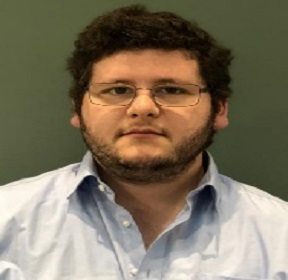
Leon G Leanse
USATitle: Quinine enhances photo-inactivation of pathogens
Abstract:
With the rise in antimicrobial resistance, it is becoming increasingly difficult to successfully treat infections caused by an array of pathogens1. Over the past few years, antimicrobial blue light (aBL) has been emerging as an novel ‘drug-free’ approach to tackle multidrug-resistant (MDR) infections. [2]. aBL is a particularly attractive alternative to traditional antimicrobials, as a previous study demonstrated that resistance development to aBL by bacteria through serial exposure is highly unlikely [3]. The antimicrobial efficacy of aBL, however, is dependent on the infecting agent, with certain bacterial species being comparatively more tolerant of aBL-mediated killing than others [4]. Therefore, we investigated the combination of antimicrobial blue light (aBL) and quinine hydrochloride (Q-HCL) for enhanced inactivation of bacterial and fungal pathogens, in vitro and in vivo, relative to either monotherapy alone. Furthermore, we performed Raman spectroscopy to monitor uptake of Q-HCL into cells. In addition, we evaluated the safety of this combination therapy in vivo using the TUNEL assay. Combining aBL (27-108 J/cm2) with Q-HCL (0.125-1 mg/mL) resulted in a significant improvement in the inactivation of the Gram-negative bacterial pathogens, Pseudomonas aeruginosa and Acinetobacter baumannii, and the fungal pathogen: Candida albicans planktonic cells in vitro. Significant
synergy (>10(3)-fold potentiation) was observed when aBL was combined with Q-HCL, compared to either treatment alone (P<0.001). aBL+Q-HCL was also effective at inactivating biofilms more effectively than either therapy alone in all pathogens tested (P<0.001). Transmission electron microscopy of A. baumanii and C. albicans revealed that aBL+Q-HCL induced morphological and ultrastructural changes consistent with cell wall and cytoplasmic damage. In addition, in P. aeruginosa and A. baumanii, using single cell Raman spectroscopy we discovered that aBL enhanced the uptake of Q-HCL into cells. aBL+Q-HCL was additionally effective at eliminating P. aeruginosa and C. albicans within mouse abrasion wounds, with a 100-fold and 10-fold improvements in the elicited antimicrobial effects (P<0.001). Q-HCL alone did no influence the viability of P. aeruginosa or C. albicans in vivo. The TUNEL assay revealed no significant presence in apoptotic cells before and 24 hours following treatment with aBL+Q-HCL. The combination of aBL+Q-HCL was highly effective at eliminating both bacterial and fungal pathogens in vitro and in vivo. These findings therefore suggest aBL+Q-HCL may be a highly effective approach to treat infections irrespective of pathogen etiology.
Biography:
Dr. Leon G. Leanse is currently appointed as a research fellow at Harvard Medical School working within the Wellman Center for Photomedicine at Massachusetts General Hospital. He is a molecular microbiologist by training, with an MSc from the London School of Hygiene and Tropical Medicine and a PhD in molecular microbiology from Imperial College London. Dr. Leanse’s research is current is currently focused on synergistic light-antimicrobial interactions for the elimination of multidrug resistant localized infections.

